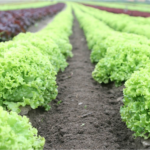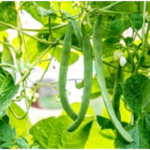PAPAYA FARMING IN NIGERIA (Carica papaya)
Cultivating Bounty: A Guide to Successful Pawpaw Farming 🌿🍈 From pre-planting tips to harvesting and health benefits, explore the world of Carica papaya cultivation. Boost your yield and market reach with these insights! #PawpawFarming #AgricultureTips #HealthyHarvest


Papaya can also be called Papaw or pawpaw.
Scientific classification
Kingdom Plantae
Order Brassicales
Family Caricaceae
Genus Carica
Species C.papaya
Carica papaya grow in three different sexes; the male, female and the hermaphrodite. The female can only be made edible if pollinated while the male only produce the pollen. The hermaphrodite can fertilize/pollinate itself since it flower contain both the reproductive organ i.e. Stamen and ovaries. Two kinds of pawpaw are commonly grown; the sweet red or orange flesh and yellow flesh pawpaw.
NB; Pollination is the process that allows plants to reproduce. In some cases, the wind and rain blows pollen between plants, which causes pollen to transfer to the female reproductive part of the plant.
PRE-PLANTING OPERATION
Clearing of land and plough to loosen the soil for water penetration as well as aeration. Ideally, a sandy loam or loamy soil rich in organic materials is suitable for planting.
Propagation
Carica papaya is a tropical fruit propagated through seed. It can be planted directly on the soil or set up under nursery. Get your seed from a good breed, dry it under the sun before planting.
PLANTING OPERATION
Mix a top soil with organic manure and put inside big nursery bags. In the centre of each bag is placed 2 seeds to prevent damaging of the roots during transplanting.
Carica papaya is a very sensitive plant to weather conditions; if the temperature becomes low the flowering stopped but flowers immediately the temperature warms up again.
Before transplanting is done dig a hole of 10 feet in line 5m or 10 feet apart. This spacing will tends to expose the plant to adequate sunlight which encourage fruiting instead of foliage (massive leaf growth).
Transplanting
After two months of planting in the nursery pawpaw is set to be ready for transplanting. Ensure the nylon or any bag used is tear off before putting it in the hole. While doing this process care must be strictly taken to prevent the root ball from being damaged as this hinders their growth capacity.
Dig a hole 10-15m deep then cover it lightly and apply compost. The spacing depends on size of the land as distance such as 1.5×1.5m, 1.8×1.8m or 2m x 2m. It can either be 4400 stand per hectare or 3200 also either 440 stand per plot or 320 per slot.
Note that Carica papaya can be intercropped with fast maturing plants like Okra, melon, maize, beans, sweet potato etc.
Irrigation
Pawpaw doesn’t require too much of water except during drought or when rain is in shortage of water. 2 litres of water is applied to the newly transplanted seedlings and 3 liters of water per plant. Apply 5 liters of water to flowering pawpaw plant, 2 times in a week. 15liters of water is applied on the bearing plant once in a week.
Fertilizer
After 2 months of planting, manure should be added. Use Vegimex at the early stage for a healthy pawpaw growth.
For every 3 months treated organic manure should be apply. But you can use NPK 15:15:15 of 50g for one plant 3 weeks after transplant, then monthly for about 6 months.
Weeding
This is done after 3 months of transplanting before fertilizer application with the use of hoe or herbicide.
Pest/Disease control
Apply Dudu-Cyper insecticide for insects elimination.
POST-PLANTING OPERATION
Harvesting
Under warm weather condition pawpaw fruits all year round. Their maturity depends on the kind of specie planted. For the hybrid variety, it starts producing between 4-6 months. There is no adverse effect on the plant when plucked wit hands especially when they are just beginning to ripe. A patch of yellow colour shown in some parts of the skin depicts ripening of the pawpaw. They will continue ripening after harvest if allowed to ripe completely before plucking hence immediate consumption to avoid wastage/spoilage. Also, do not pluck prematurely as the fruit shrinks and the taste will not be as matured one.
Preservation
The only way to preserve pawpaw is to dry them very well and grind into powder. It could also be process into fruit juice to stay long with the addition of preservative.
Yield
As the pawpaw tree ages so is the productivity decreases. The fruit will become few and small in sizes; very prone to disease. A good variety of pawpaw will yield about 70-100 fruits a year.
Marketing
Target large markets, traders, fruit companies, vendors etc.
Pawpaw variety
The two varieties that are mostly in commercial farming are the red flesh and yellow flesh.
NB; the yellow flesh is said to be the best variety because of its good taste, big size and longer shelf life.
HEALTH BENEFITS OF PAWPAW
Pawpaw contains both health and medicinal value when consumed. It is also cultivated commercially for economic reasons. Apart from the benefits stated, pawpaw also contains;
⦁ No cholesterol
⦁ Low calories
⦁ Soft and easily digestible
⦁ When ripe, it contains more Vitamin C than orange/lemon
⦁ It is an immune booster and inflammatory agent.
CONCLUSION
During the time of planting Pawpaw, it is advisable to spread the time of planting in weeks. This allows pawpaw to fruit all year round and also prevent addition of preservative for a long time.

Vegetable Farming In Nigeria
Est. reading time:
12 minutes, 14 seconds

CASSAVA FARMING IN NIGERIA.
Est. reading time:
10 minutes, 21 seconds

MAIZE FARMING IN NIGERIA
Est. reading time:
12 minutes, 44 seconds

BEANS FARMING IN NIGERIA
Est. reading time:
9 minutes, 42 seconds

RICE PRODUCTION IN NIGERIA
Est. reading time:
11 minutes, 18 seconds
